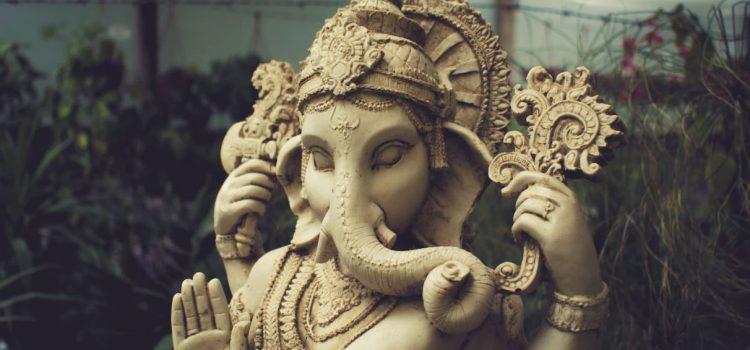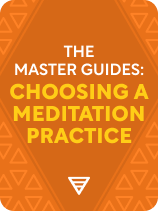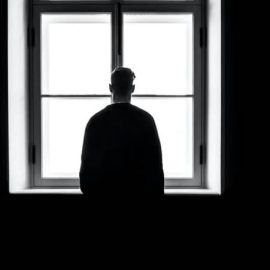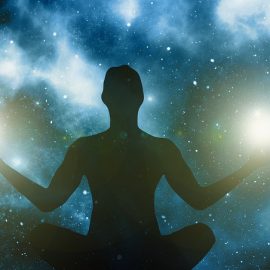

This article is an excerpt from the Shortform book guide to "The Master Guides: Choosing a Meditation Practice" by Shortform. Shortform has the world's best summaries and analyses of books you should be reading.
Like this article? Sign up for a free trial here.
What is Hindu meditation? How is Hindu meditation related to yoga?
Hindu meditation is also known as yoga. While many people practice yoga without practicing Hinduism, yoga is rooted in the religion. There are two styles of yoga, hatha yoga and kriya yoga—one focuses on the physical and one focuses on breathing and energy.
Continue reading to learn about the Hindu meditation practice of yoga.
Hindu Meditation and Yoga
What is Hindu meditation—also referred to as yoga? Yoga translates as “union”: Its purpose is to unite your consciousness with God. This sense of connection can help alleviate feelings of depression, anxiety, and loneliness. But, even if you’re not Hindu (or not religious at all), practicing yoga can build physical strength, reduce stress, and improve your ability to focus.
Background: Hindu Beliefs
In Autobiography of a Yogi, Paramahansa Yogananda—a famous yoga practitioner and teacher—briefly explains yoga’s core practices. These include physical, mental, and behavioral disciplines collectively called the Eightfold Path of Yoga (sometimes called the Eight Limbs of Yoga). Note that while one of the steps of the Eightfold Path is itself meditation, the other practices can help you meditate more effectively.
- Yama: behaviors to avoid. The five Yamas are violence (in action, speech, and thought), lying, stealing, sex, and greed. These are selfish behaviors that cause you to focus on yourself instead of God, and therefore block you from reaching enlightenment.
- Niyama: good deeds, or duties to observe. The five Niyamas are cleanliness, contentment, discipline, learning, and devotion to God. These practices create a healthy physical and mental environment, allowing you to more effectively seek God.
- Asana: posture. Holding yourself in a stable and comfortable position allows for extended meditation. This helps you to build physical strength and discipline, thereby gaining better control over your own body.
- Pranayama: breathing exercises. Controlling your breathing helps you to strengthen your discipline and deepen your meditation.
- Pratyahara: inward focus. This means detaching your senses from the outside world. Directing all your attention to your own thoughts and moment-to-moment experiences helps you to build mindfulness and gain a greater understanding of yourself.
- Dharana: concentration. This involves focusing on a single thought for extended periods of time, which helps you build mental strength and discipline.
- Dhyana: meditation. This is a state of calm and focus that you can achieve by practicing Dharana.
- Samadhi: expanded consciousness. This is an all-seeing, all-knowing state of bliss achieved by temporarily joining your consciousness to God. Yogis like Yogananda say that samadhi requires years of intense, dedicated training to achieve.
Styles of Yoga
In this section, we’ll discuss two styles of yoga: hatha yoga, which emphasizes physical exercises (asana), and kriya yoga, which focuses on breathing exercises and controlling your life energy (pranayama).
Hatha Yoga
Hatha yoga is what most Westerners imagine when they think of yoga: a form of exercise that trains flexibility and balance. While most forms of meditation are about mastering your mind, hatha yoga focuses on helping you master your body by building up physical strength and control.
This is probably the easiest type of meditation to find a teacher for—odds are there’s a gym or yoga studio near you where you can take classes in hatha yoga. Taking a class will also give you a fixed schedule for practicing your yoga, which can help you work it into an already-busy lifestyle.
Hatha yoga can benefit anyone who’s physically able to do it, but psychiatrist Bessel van der Kolk (The Body Keeps the Score) says it’s especially helpful for trauma survivors for several reasons. First, yoga’s inherent focus on the breath—moving with each inhale and exhale, noticing whether your breath is fast or slow, and counting breaths in certain poses—helps control your heart rate, which in turn helps you to stay calm and stave off anxiety attacks.
Second, yoga teaches you to listen and respond to your body, ultimately helping you to be more connected to and comfortable in it. You need to feel connected to your body to have a sense of self; if you can’t understand what your body is telling you (for example, are you hungry, or are you anxious?), then you can’t identify how you feel or what you need, and you won’t be able to properly take care of yourself. Feeling safe in your body also helps you articulate your emotions and even traumatic memories that were previously overwhelming.
Third, yoga teaches you to notice the emotions connected to certain physical sensations; this is especially critical for trauma sufferers, because certain physical sensations and poses can trigger flashbacks. (For example, many sexual assault survivors panic in poses that have them lying on their backs with their feet up in the air.) As long as you approach yoga at a slow pace and avoid becoming overwhelmed, the practice can help you work through those intense emotions.
Finally, yoga and body awareness improve your sense of time. Trauma causes people to feel stuck in their traumatic memory, and you may struggle to be present. Yoga encourages you to be present by focusing on your breath and body sensations, and it reinforces the fact that experiences are temporary. (For example, as hard as this pose may be, you only need to endure it for 10 breaths.)
Kriya Yoga
Kriya yoga is a particular style of yoga that heavily emphasizes pranayama: breathing exercises and controlling your inner life energy (called prana). This is the form of yoga that Paramahansa Yogananda (Autobiography of a Yogi) practiced.
While we’re all born knowing how to breathe correctly, that skill fades as we age. By adulthood, most people are only using one-third of their total lung capacity, and therefore taking three times as many breaths as they need to. Re-learning to breathe correctly strengthens your lungs and your immune system.
Yogananda explains that these breathing exercises remove toxins from the blood, which allows life energy to flow more freely. You might picture pranayama as removing trash (toxins) that’s blocking the flow of a river (blood and life energy).
Once your life energy is flowing freely, you focus it around your central nervous system (that is, your spine and brain), which strengthens your natural ability to perceive and understand God. This is called the Kriya Technique, from which kriya yoga takes its name.
A few of kriya yoga’s other techniques include:
Energization Exercises: A series of breathing exercises that takes about 15 minutes to perform. These exercises help you to consciously draw in spiritual energy from the world around you, using it to strengthen your body and release tension.
Hong-Sau Technique of Concentration: Withdrawing your attention from the world around you, focusing it entirely inward to help you solve a problem or meditate on God.
Aum Technique of Meditation: Developing your own divine qualities by meditating on God, and experiencing God as an omnipresent and universal force. In other words, understanding that God is present in all things, and that you are part of God.

———End of Preview———
Like what you just read? Read the rest of the world's best book summary and analysis of Shortform's "The Master Guides: Choosing a Meditation Practice" at Shortform.
Here's what you'll find in our full The Master Guides: Choosing a Meditation Practice summary:
- The best, time-tested advice on meditation from meditation experts
- A look at each of the four major meditation traditions
- How to choose a meditation practice that's right for you and your lifestyle






